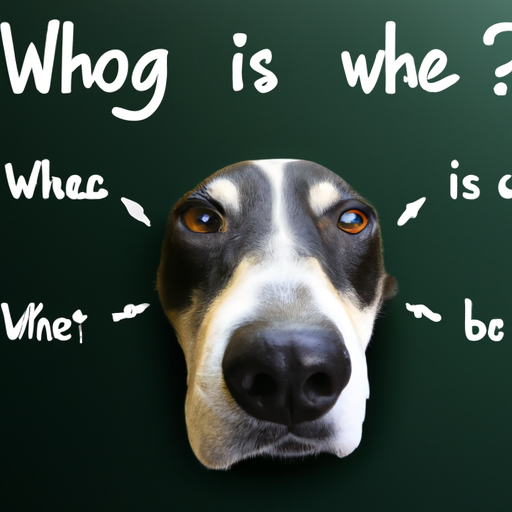“`markdown
What is a Dog’s Nose Called?
Introduction
You, as a caregiver, are always in search of knowledge that can help you better understand your canine companion. One of the most intriguing features of your dog is its nose. With such an extraordinary sensory ability, the dog’s nose, or snout, is a fascinating subject worthy of exploration.
The Anatomy of a Dog’s Nose
The external part of a dog’s nose is often referred to as the snout, but scientifically, it is known as the rhinarium. This area is not simply a passage for air but a complex sensory organ.
- Nares: These are the nostrils through which your dog breathes.
- Philtrum: A groove that runs from the nostrils to the upper lip, aiding in the transfer of scent particles.
- Rhinarium: This is the naked skin area that surrounds the nostrils.
| Part | Function |
|---|---|
| Nares | Breathing |
| Philtrum | Transfer of scent particles |
| Rhinarium | Sensory organ |
A Dog’s Nose and Their Extraordinary Sense of Smell
Next, let’s delve into the reason why a dog’s nose is so extraordinary – their sense of smell. Your dog’s nose is a masterwork of nature. It’s estimated that dogs can smell anywhere from 10,000 to 100,000 times better than we can. This is because of a few key factors:
- They have more scent receptors. A Bloodhound, for instance, has approximately 300 million scent receptors compared to our measly 6 million.
- The part of the brain that processes smells is, relative to total brain size, 40 times larger than ours.
How to Care for Your Dog’s Nose
As a caregiver, you might be wondering, “How do I care for my dog’s nose?” Proper care can ensure that your dog’s nose functions optimally. Here are some tips:
- Keep your dog hydrated. A healthy dog’s nose is often moist.
- Protect your dog’s nose from extreme weather.
- Regularly check for any unusual signs such as excessive dryness, discharge, or change in color.
Common Nose Problems in Dogs
Despite your best efforts, your dog may still encounter some common nose problems. It’s important to recognize these early and seek veterinary help.
- Nasal discharge or bleeding
- Change in color
- Cracked or excessively dry nose
- Swelling or lumps on the nose
FAQ
Q: Why is my dog’s nose wet?
A: A dog’s nose is often wet due to a thin layer of mucus that aids in absorbing scent chemicals.
Q: Why does my dog’s nose change color?
A: It might be due to weather changes, aging, or certain health issues. Consult your vet if you notice dramatic changes.
Q: Is a dry nose a sign of illness in dogs?
A: Not necessarily. While a moist nose is common, a dry nose isn’t always a sign of illness. However, if it’s coupled with other symptoms, it’s best to consult a vet.
Understanding your dog’s nose not only deepens your bond but also enables you to provide better care for your furry friend. So, keep exploring, keep learning, and most importantly, keep caring.
“`



